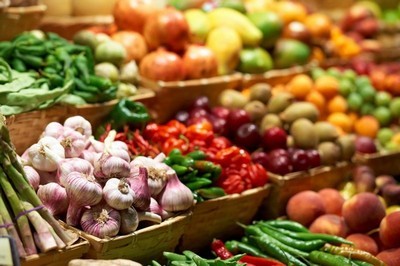The IEA raised the forecast for oil production in Russia in 2022 by 260 thousand barrels per day.

The International Energy Agency (IEA) increased by 260 thousand barrels per day. the forecast for the growth of oil production in Russia in 2022 follows from the monthly report of the agency.
“We expect Russian oil production to decline gradually from August to November, along with the expected reduction in refining volumes, and believe that the decline will be sharper in December, when the EU embargo on Russian oil comes into force. This will lead to an average annual production in 2022 of 10.86 million barrels per day, which is relatively little different from 2021,” the report says.
The previous IEA forecast assumed that in 2022 Russia would produce 10.6 million barrels per day.
See also EU announced six proposals for a new package of sanctions against Russia 01:06
At the same time, the agency notes, Russia became the largest supplier of oil to CHINA in May and June. China accounted for 35% of oil exports, while exports to India rose to a new record high of 975,000 barrels per day in July.
“The final June seaborne EXPORT data show that total oil shipments to China, which amounted to 2.1 million bbl/d, exceeded the volumes sent to the EU countries (1.8 million bbl/d) for the first time. July figures are identical for the two regions for now, but volumes in China are likely to rise more as flights to "unknown" destinations are completed," the report said.
Europeans have increased purchases of Russian oil after the introduction of the embargo Economics how Russian companies cancel in the West Articles Pro “No one understood the boss.” How to change speech Companies began to create digital copies of famous people. Why is it dangerous Articles Pro Is it true that honey,
Since the end of February, many Western countries have begun to impose sanctions against Russia that have affected the energy sector. The US and the UK have completely abandoned oil purchases from Russia, and the EU has introduced a partial ban: until December 5, 2022, one-time transactions for the import or execution of contracts for the purchase of Russian oil concluded before June 4 are allowed; for petroleum products, similar transactions are possible until February 5, 2023.
In 2021, the EU imported €99 billion worth of Russian energy – 62.5% of all merchandise imports from Russia to the EU and 4.7% of all imports to Europe as a whole. EU countries imported crude oil for €48.5 billion, oil products for €22.4 billion, natural gas (including LNG) for €17.8 billion and coal for €5.1 billion, according to the data of the European Commission.
Against the backdrop of rising energy prices, the contribution of the oil and gas sector to the Russian economy in January-March 2022 reached a record 21.7%, Rosstat reported. The agency also disclosed the share of the oil and gas sector in 2021, which showed growth for the first time in three years, increasing to 17.4% compared to 13.9% in 2020, with data for 2020 revised from 15.3%.
The IEA previously predicted that global oil demand would increase by 2.1 million barrels per day in 2022. — to 99.7 million. The forecast was downgraded by 1.1 million barrels per day. because of the situation in Ukraine. At the same time, the agency assumed that possible interruptions in the supply of Russian oil against the backdrop of new sanctions could cause a global shock in the market, and oil production in Russia itself could fall by a third.
Read together with it:
- Боливия экспортирует говядину на сумму 797 миллионов долларов и вводит новые цифровые сертификаты для внешней торговлиЭкспорт говядины из Боливии в период с 2021 по 2025 год достиг 797 миллионов долларов. Китай является основным рынком сбыта этого мяса, на который приходится 74% продаж, сообщила Карина Серрудо, генеральный директор Национального таможенного управления. Параллельно с этим ведомство включило сертификат безопасности экспортных пищевых продуктов для говядины в систему «Единое окно для внешней торговл...
- Поголовье свиней в Бразилии продолжает растиТакже наблюдался рост убоя свиней на 1,2%, достигнув рекордного уровня в 2024 году, хотя рост сектора замедлился. Экспорт свинины также достиг исторического максимума. По географическому распределению Толедо (штат Парана) сохранил лидерство по производству свинины среди 5487 муниципалитетов, где ведётся свиноводство, на долю которого приходится 2,2% от общего поголовья (95......
- Bloomberg узнал о плане G7 значительно ужесточить санкции против РоссииНовый пакет санкций будет включать меры, в частности, против энергетики, финансов и военной промышленности, а также крупнейших нефтяных компаний России. Разработку пакета G7 планирует завершить в октябре, выяснил BLOOMBERG Страны «Большой семерки» (G7) приближаются к соглашению о значительном ужесточении санкций в отношении России, сообщает агентство Bloomberg со ссылкой на проект заявления. «Мы с...





























































